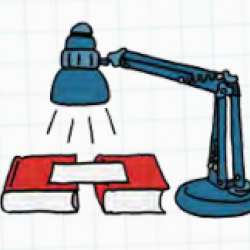Source Institutions
Source Institutions
Add to list Go to activity
Activity link broken? See if it's at the internet archive

In this activity, learners explore the difference between compact fluorescent light (CFL) bulbs and traditional incandescent bulbs. Learners examine which light bulbs are more energy efficient by conducting experiments at three stations.
- 5 to 10 minutes
- 45 to 60 minutes
- $5 - $10 per group of students
- Ages 8 - 14
- Activity, Experiment/Lab Activity, Lesson/Lesson Plan
- English
Quick Guide
Materials List (per group of students)
- incandescent bulb, any wattage
- 2 desk lamps, shade included
- 2 tbsp. cooking oil
- 2 droppers
- half-sheets of plain paper
- 2 rulers
- 2 sets of 2 books of equal thickness
- 2 stopwatches or clock
- paper and pencils
- thermometer (optional)
- compact fluorescent light (CFL) bulb with equivalent light output as incandescent bulb
- calculator (optional)
Subjects
-
Engineering and Technology
-
Engineering
- Electrical Engineering
- Environmental Engineering
- Technology
-
Engineering
-
Physical Sciences
-
Heat and Thermodynamics
- Heat and Temperature
- Heat Transfer
- Energy
-
Heat and Thermodynamics
-
Mathematics
- Algebra
-
Data Analysis and Probability
- Data Analysis
- Data Collection
-
The Nature of Science
-
Science and Society
- Risks and Benefits
- The Scientific Process
-
Science and Society
-
The Nature of Technology
-
Technology and Society
- Impacts of Technology
- Technology and the Environment
-
Technology and Society
Informal Categories
- Nature and Environment
Audience
To use this activity, learners need to:
- see
- read
- touch
Learning styles supported:
- Involves teamwork and communication skills
- Uses STEM to solve real-world problems
- Involves hands-on or lab activities
Culture, ethnicity, and gender
-
Girls
- Explicity developed for this group
- Acknowledges this group's contributions to STEM
- Highlights STEM opportunities for this group
- Identifies role models or mentors in STEM fields from this group
- Uses inclusive images of people from this group
Other
Components that are part of this resource:
Includes alignment to state and/or national standards:
This resource is part of:
Access Rights:
- Free access
By:
Rights:
- All rights reserved, Twin Cities Public Television, Inc., 2010
Funding Sources:
- National Science Foundation, 0813519
- ExxonMobil
